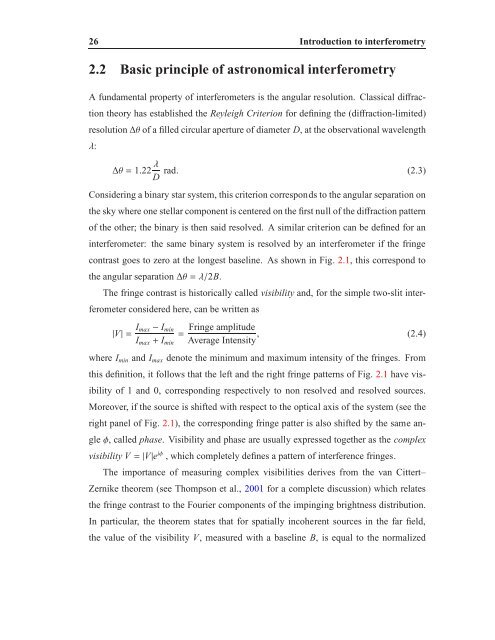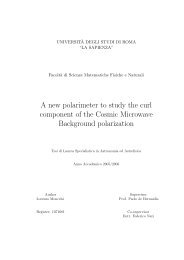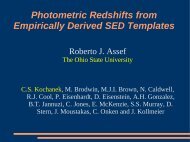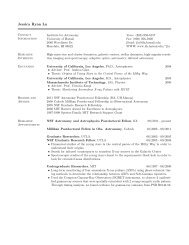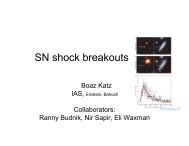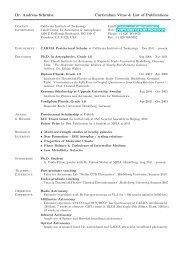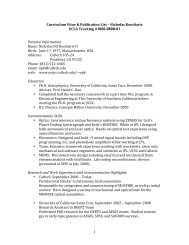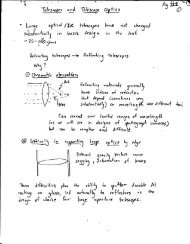Interferometric observations of pre-main sequence disks - Caltech ...
Interferometric observations of pre-main sequence disks - Caltech ...
Interferometric observations of pre-main sequence disks - Caltech ...
You also want an ePaper? Increase the reach of your titles
YUMPU automatically turns print PDFs into web optimized ePapers that Google loves.
26 Introduction to interferometry<br />
2.2 Basic principle <strong>of</strong> astronomical interferometry<br />
A fundamental property <strong>of</strong> interferometers is the angular resolution. Classical diffrac-<br />
tion theory has established the Reyleigh Criterion for defining the (diffraction-limited)<br />
resolution∆θ <strong>of</strong> a filled circular aperture <strong>of</strong> diameter D, at the observational wavelength<br />
λ:<br />
∆θ=1.22 λ<br />
D<br />
rad. (2.3)<br />
Considering a binary star system, this criterion corresponds to the angular separation on<br />
the sky where one stellar component is centered on the first null <strong>of</strong> the diffraction pattern<br />
<strong>of</strong> the other; the binary is then said resolved. A similar criterion can be defined for an<br />
interferometer: the same binary system is resolved by an interferometer if the fringe<br />
contrast goes to zero at the longest baseline. As shown in Fig. 2.1, this correspond to<br />
the angular separation∆θ=λ/2B.<br />
The fringe contrast is historically called visibility and, for the simple two-slit inter-<br />
ferometer considered here, can be written as<br />
|V|= Imax− Imin<br />
Imax+ Imin<br />
= Fringe amplitude<br />
, (2.4)<br />
Average Intensity<br />
where Imin and Imax denote the minimum and maximum intensity <strong>of</strong> the fringes. From<br />
this definition, it follows that the left and the right fringe patterns <strong>of</strong> Fig. 2.1 have vis-<br />
ibility <strong>of</strong> 1 and 0, corresponding respectively to non resolved and resolved sources.<br />
Moreover, if the source is shifted with respect to the optical axis <strong>of</strong> the system (see the<br />
right panel <strong>of</strong> Fig. 2.1), the corresponding fringe patter is also shifted by the same an-<br />
gleφ, called phase. Visibility and phase are usually ex<strong>pre</strong>ssed together as the complex<br />
visibility V=|V|e iφ , which completely defines a pattern <strong>of</strong> interference fringes.<br />
The importance <strong>of</strong> measuring complex visibilities derives from the van Cittert–<br />
Zernike theorem (see Thompson et al., 2001 for a complete discussion) which relates<br />
the fringe contrast to the Fourier components <strong>of</strong> the impinging brightness distribution.<br />
In particular, the theorem states that for spatially incoherent sources in the far field,<br />
the value <strong>of</strong> the visibility V, measured with a baseline B, is equal to the normalized


